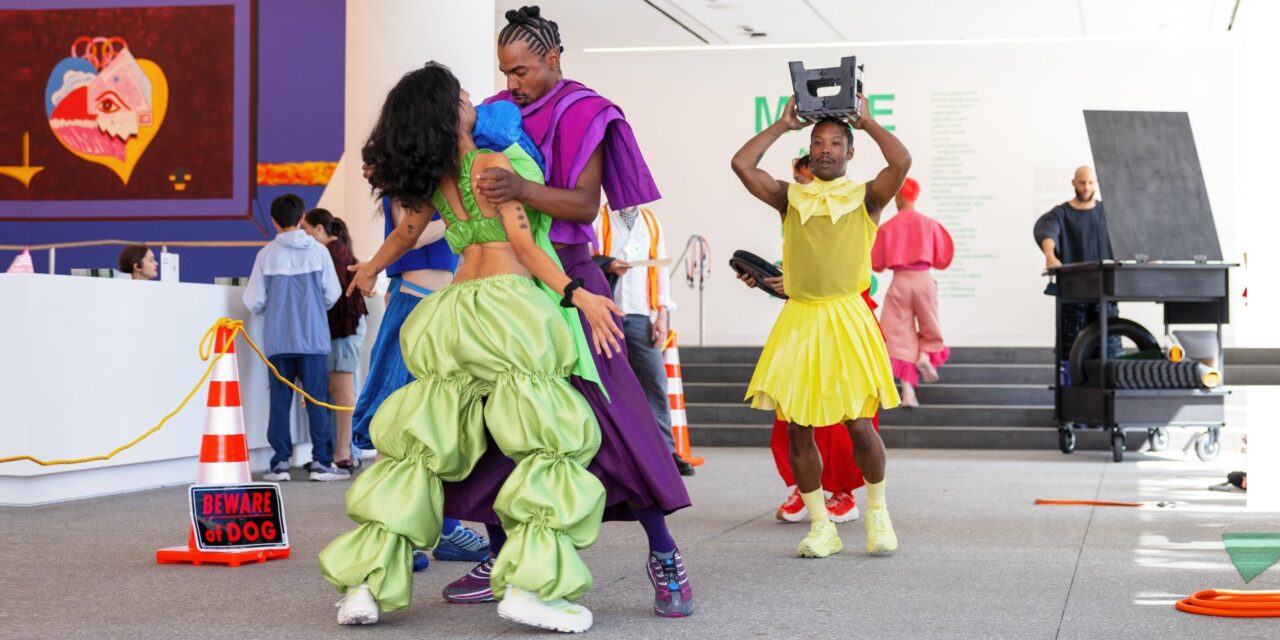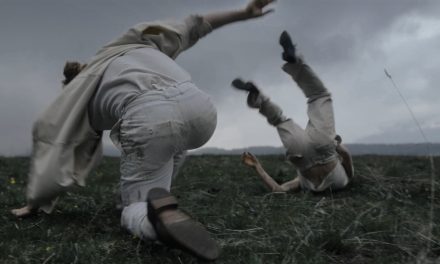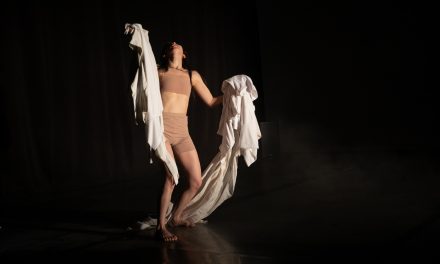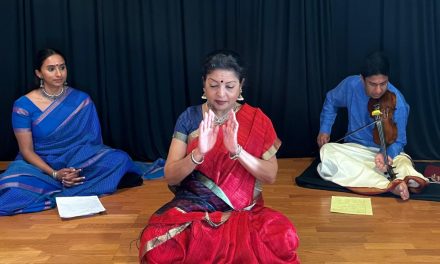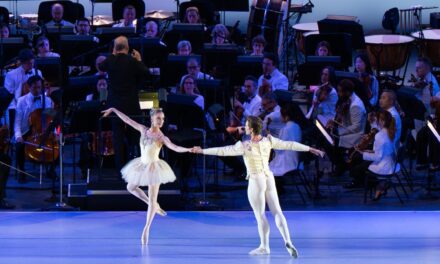As part of the Hammer Museum’s Made in L.A. 2025, choreographer and visual artist Will Rawls presented a debut of his site specific performance work, “Unmade,” on Sunday, October 5th. It traversed throughout the museum over the course of the afternoon and touched on themes of repurposing materials, collaboration, and building community. The installation will be shown on various Saturdays until February.
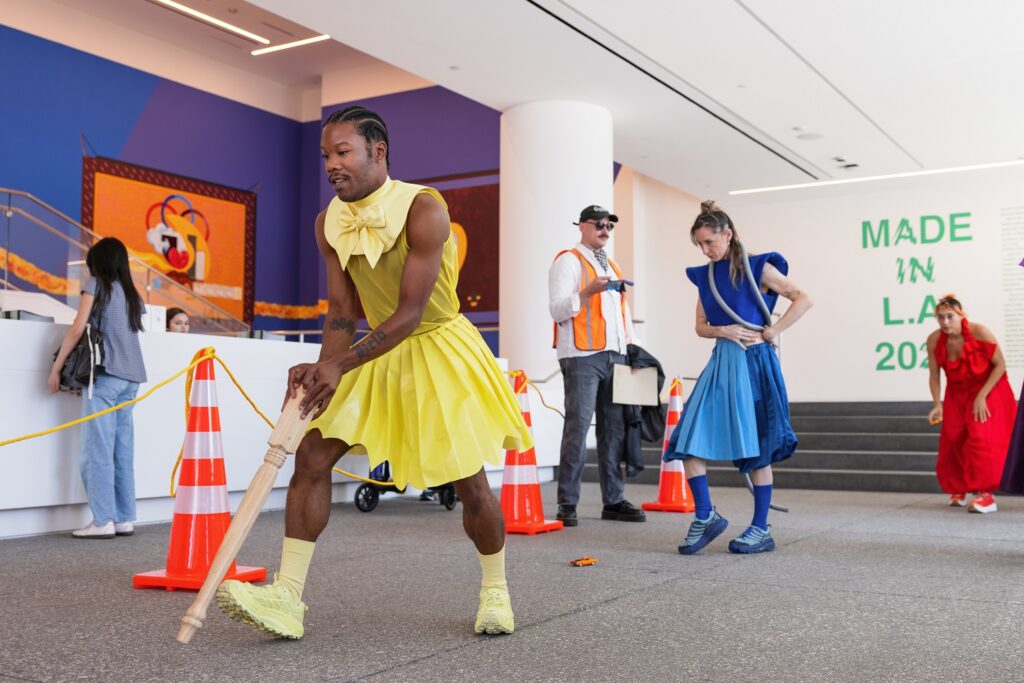
“Unmade” by Will Rawls – Installation view at Hammer Museum – (L to R) Ajani Brannum, Maya Billig and Tiara Jackson – Photo by Sara Golonka.
The costumes, designed by Nancy Stella Soto, were eye-catching and fit the piece well. Each dancer was in a different bright color, styled in various layers and textures of fabric. All the costumes were voluminous in different ways: exaggerated ruffles on the shoulders, a shirt that was mostly a giant bow, wide pants, or a pleated skirt. They made the dancers stand out from the passing crowd and felt whimsical yet functional, contributing to the overall feeling I got from the performance of a nomadic cohort on a journey. While some of the overall visuals may have been reminiscent of encampments with the dancers collecting piles of assorted items, the bright costumes set the piece firmly in an imagined and possibly future world. This avoided any problematic imitations of such a real issue, while allowing Rawls to perhaps allude to the ways that the lack of resource-sharing and connection in our society contribute to the increase in these types of communities.
The performance ebbed and flowed, and each segment would take the dancers and their collection of objects on a journey from one location to the next, where they would take a pause before continuing. The objects they interacted with were assorted and mostly had a utilitarian feel: wooden boards, bright orange cones, yellow rope, buckets, a TheraBand, extension cords, signs (“No Smoking”, “Exit”, to name a few), a watermelon pillow, a large teddy bear. The dancers would manipulate the objects in a variety of ways – at first alone, and later often in tandem – and each time reimagined how a particular object could be used or moved.
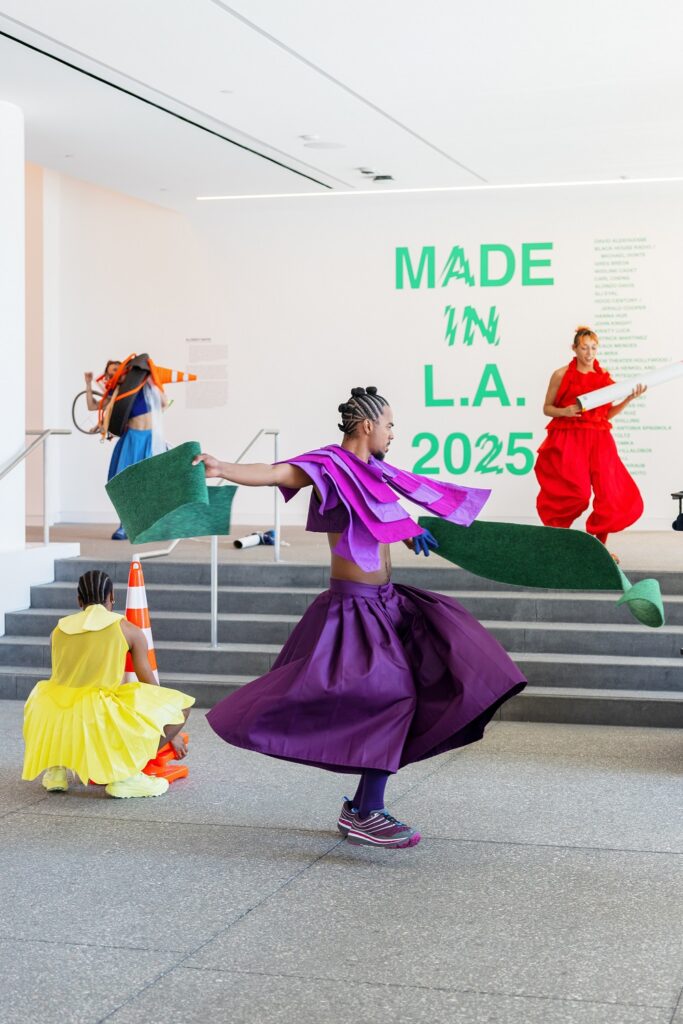
“Unmade” by Will Rawls – Installation view at Hammer Museum – (L to R) Ajani Brannum, Maya Billig,
jeremy de’jon guyton, and Tiara Jackson – Photo by Sara Golonka.
In one moment, a dancer held a poster tube with her head and neck and used it to push the lid of a bucket noisily down a path. She eventually linked up with another dancer and created a game in which the poster tube was used as a bat. The explorations were often nonsensical but drove home the theme of repurposing objects. Their interactions were always wordless and reminded me how much we can connect and share without speaking. I was curious how much was explicitly planned and how much was structured exploration, as everything felt very organic and in the moment, including a few moments of connecting with audience members. I could see some patterns emerge that may have guided the journey, for example, in one part dancers would move one at a time to a new location, and then it seemed that they left sequentially in the same order.
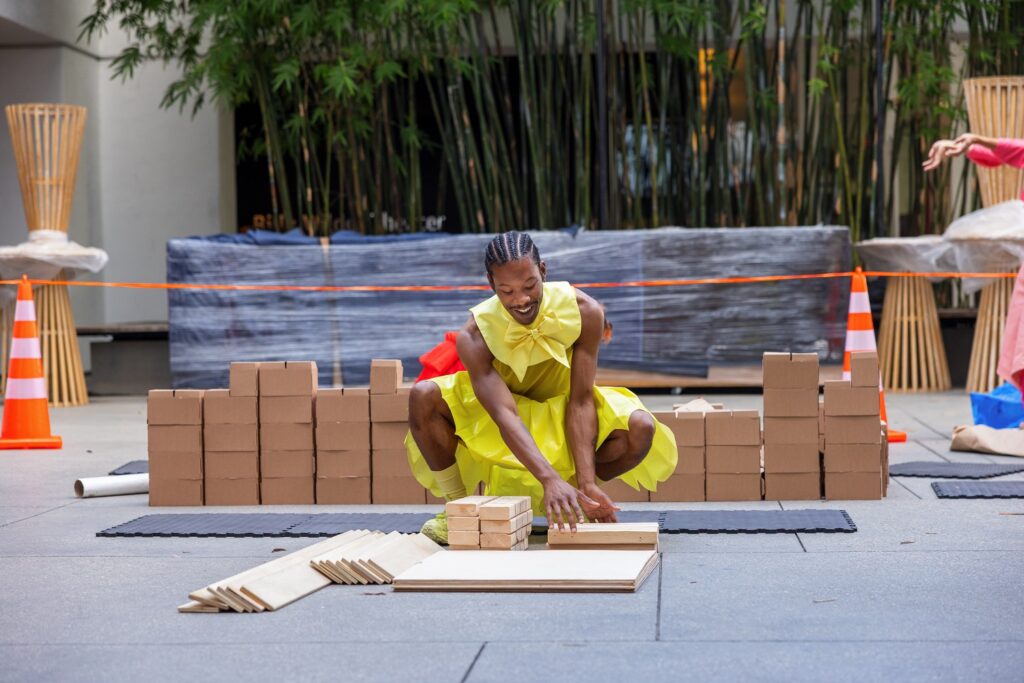
Ajani Brannum in “Unmade” by Will Rawls – Installation view at Hammer Museum – Photo by Sara Golonka.
The dancers were a strong group and were very committed to their characters and tasks. While the technical dancing was minimal, the dancers had great physical awareness and made simple moments interesting to watch with their intentional approach. The soundscore of the performance was the ambient crowd noises mixed with the sounds of the dancers dragging, hitting, or sliding objects. In some moments, the dancers seemed to intentionally make more noise, emphasizing an energetic peak or more chaotic section. These six dancers were Gurmukhi Bevli, Maya Billig, Ajani Brannum, jeremy de’jon guyton, Tiara Jackson, and Kensaku Shinohara.
The shifts in mood gave the piece shape and were subtle yet clear. In the last section, the individual dancers first moved separately and slowly to a line of “stalls” separated by small boards. In these separate spaces, they each found a repeating action or tic that would increase with intensity, eventually leading them to take their exploration out of one spot. Energy grew as the dancers began to see each other and interact. From a peak of energy and sound, the energy calmed as the dancers worked in parallel on a final task to gather all their objects in one last location. The trajectory seemed to show the initial buzz and excitement of connection followed by settling into a calmer community.
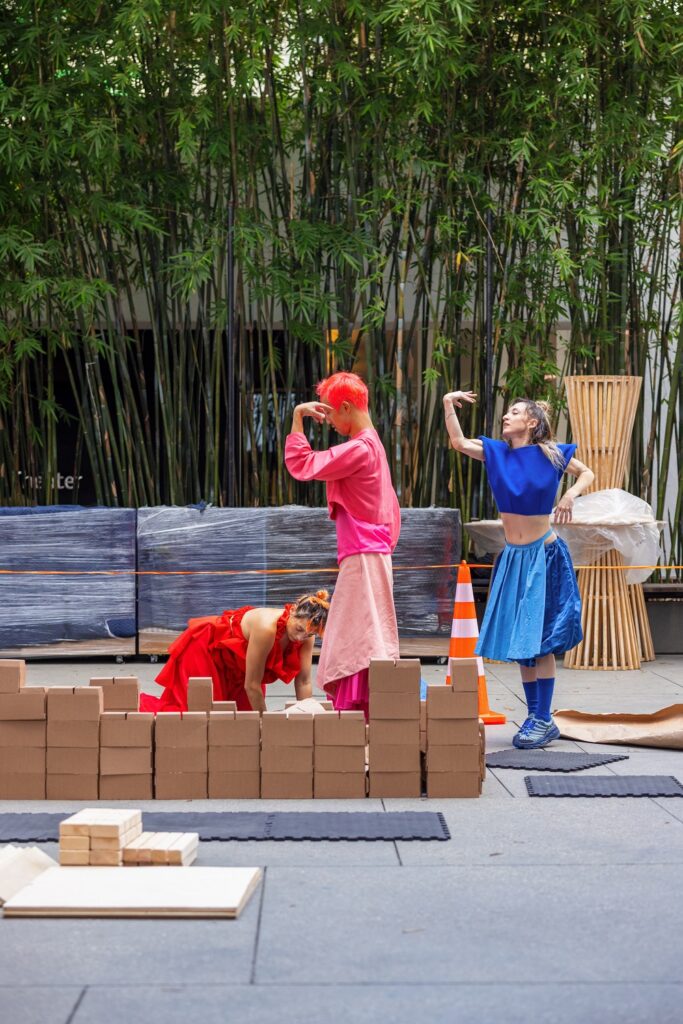
“Unmade” by Will Rawls – Installation view at Hammer Museum – (L to R) Tiara Jackson, Kensaku
Shinohara and Maya Billig – Photo by Sara Golonka.
Watching continuously, sometimes things moved slowly, but it felt appropriate for the setting and performance type where most observers might dip in and out as they move through the museum. Rawls showed his strong eye for visual aesthetics with the interesting tableaus that were created with the bodies, fabric, and assorted objects. The themes of resource-sharing and interaction were played with, and Rawls seemed to leave the interpretation up to each viewer, rather than pushing a strong perspective. Paired with the lovely indoor-outdoor layout of the Hammer and the rest of the visual art offerings of Made in L.A. 2025, it was an enjoyable experience to visit and witness this performance installation.
For more information about Will Rawls, please visit his website.
For more information about the Hammer Museum, please visit their website.
Written by Rachel Turner for LA Dance Chronicle.
Feature image: “Unmade” by Will Rawls – Installation view at Hammer Museum – (L to R) Maya Billig (partially hidden), Gurmukhi Bevli, jeremy de’jon guyton, Ajani Brannum, Tiara Jackson (partially hidden), Kensaku Shinohara and Will Rawls – Photo: Sara Golonka.

